Discover how a bimodal integration strategy can address the major data management challenges facing your organization today.
Get the Report →Feed Certinia Data into FineReport
How to set Certinia data as a JDBC data source in FineReport.
The CData JDBC Driver for Certinia fully implements the JDBC standard and can provide Certinia data connectivity to a wide variety of BI, reporting, and ETL tools and custom applications. In this article, we explain how to set Certinia data as JDBC data source in FineReport and view Certinia data as a table in the Report Designer.
Set Up a JDBC Data Source of Certinia Data
Follow the instruction below to set Certinia data as a FineReport database connection.
- Copy the cdata.jdbc.certinia.jar file from the lib folder in the CData JDBC Driver for Certinia installation directory to the lib folder of the FineReport installation directory. You will need to copy the cdata.jdbc.certinia.lic file as well.
- From the Server tab, select Define Data Connection, click to add a new connection, and click JDBC.
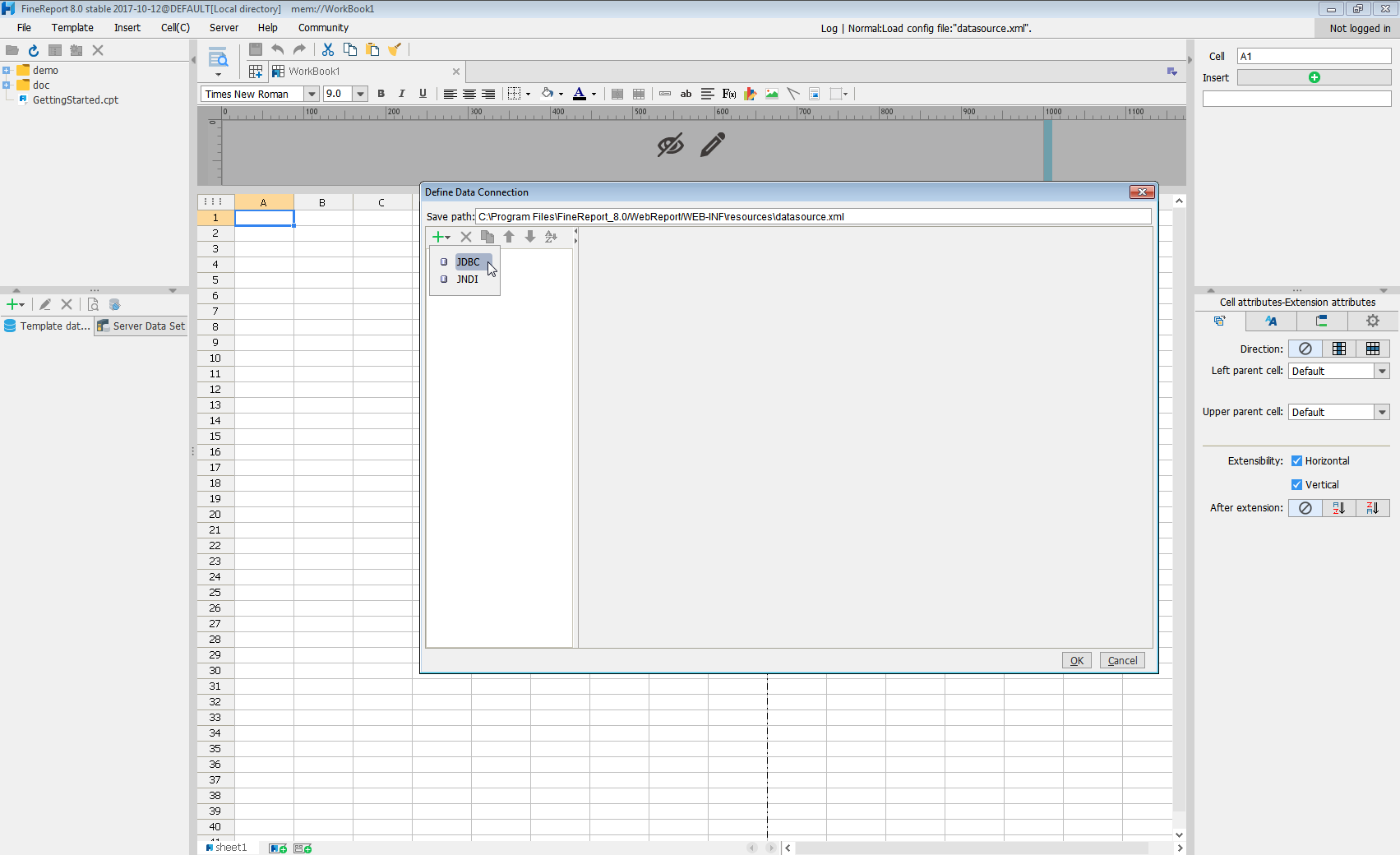
Next we will set up the data connection definition in the window.
- Database: Others
- JDBC Driver: cdata.jdbc.certinia.CertiniaDriver
-
URL: A standard JDBC connection string using semicolon-separated connection properties.
There are several authentication methods available for connecting to Certinia: login credentials, SSO, and OAuth.
Authenticating with a Login and Token
Set the User and Password to your login credentials. Additionally, set the SecurityToken. By default, the SecurityToken is required, but you can make it optional by allowing a range of trusted IP addresses.
To disable the security token:
- Log in to Certinia and enter "Network Access" in the Quick Find box in the setup section.
- Add your IP address to the list of trusted IP addresses.
To obtain the security token:
- Open the personal information page on certinia.com.
- Click the link to reset your security token. The token will be emailed to you.
- Specify the security token in the SecurityToken connection property or append it to the Password.
Authenticating with OAuth
If you do not have access to the user name and password or do not want to require them, use the OAuth user consent flow. See the OAuth section in the Help for an authentication guide.
Connecting to Certinia Sandbox Accounts
Set UseSandbox to true (false by default) to use a Certinia sandbox account. Ensure that you specify a sandbox user name in User.
Built-in Connection String Designer
For assistance in constructing the JDBC URL, use the connection string designer built into the Certinia JDBC Driver. Either double-click the JAR file or execute the jar file from the command-line.
java -jar cdata.jdbc.certinia.jarFill in the connection properties and copy the connection string to the clipboard.
![Using the built-in connection string designer to generate a JDBC URL (Salesforce is shown.)]()
When you configure the JDBC URL, you may also want to set the Max Rows connection property. This will limit the number of rows returned, which is especially helpful for improving performance when designing reports and visualizations.
A typical JDBC URL is below:
jdbc:certinia:User=myUser;Password=myPassword;Security Token=myToken; - Click Connection pool attributes and set Test before getting connections to No.
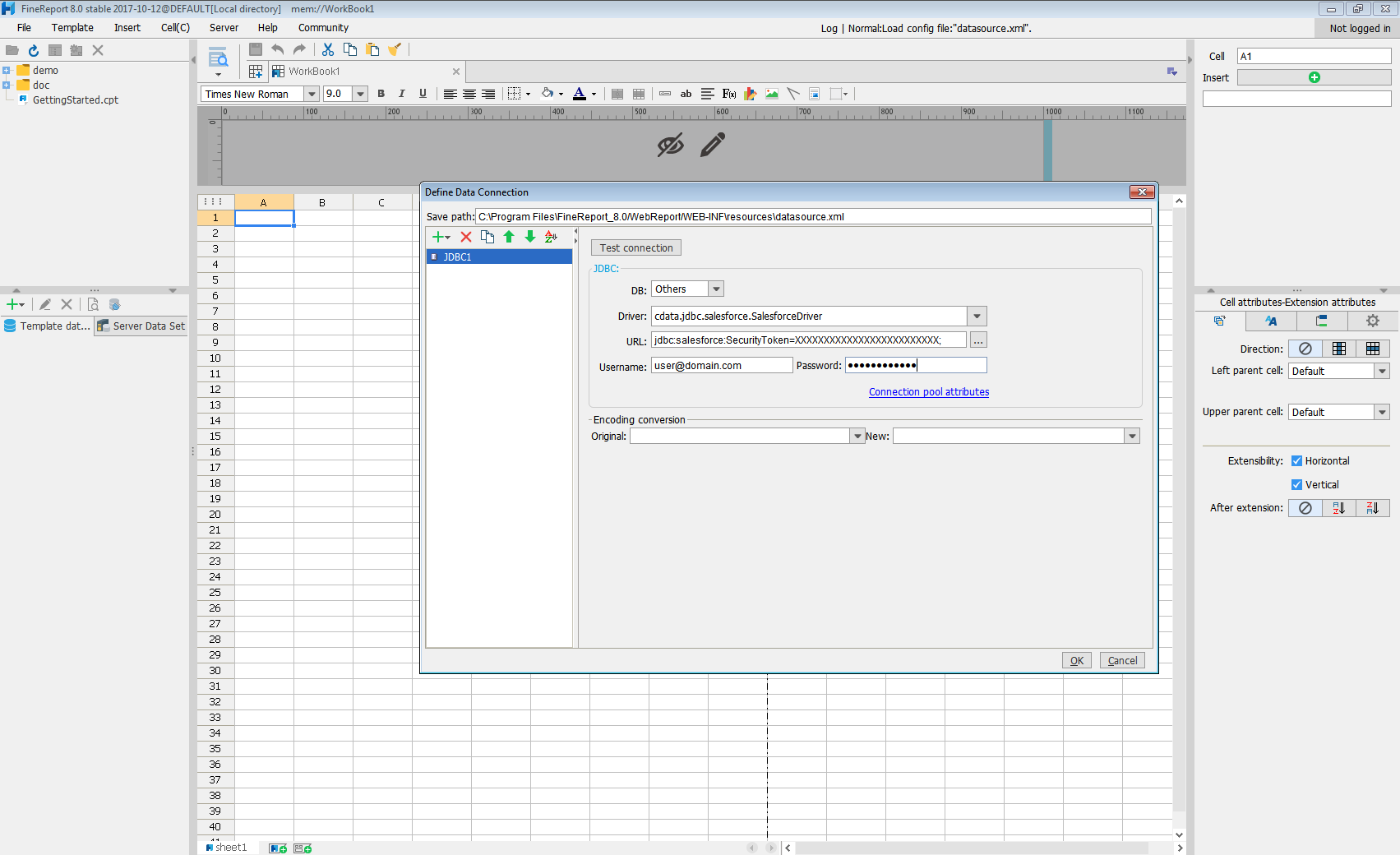
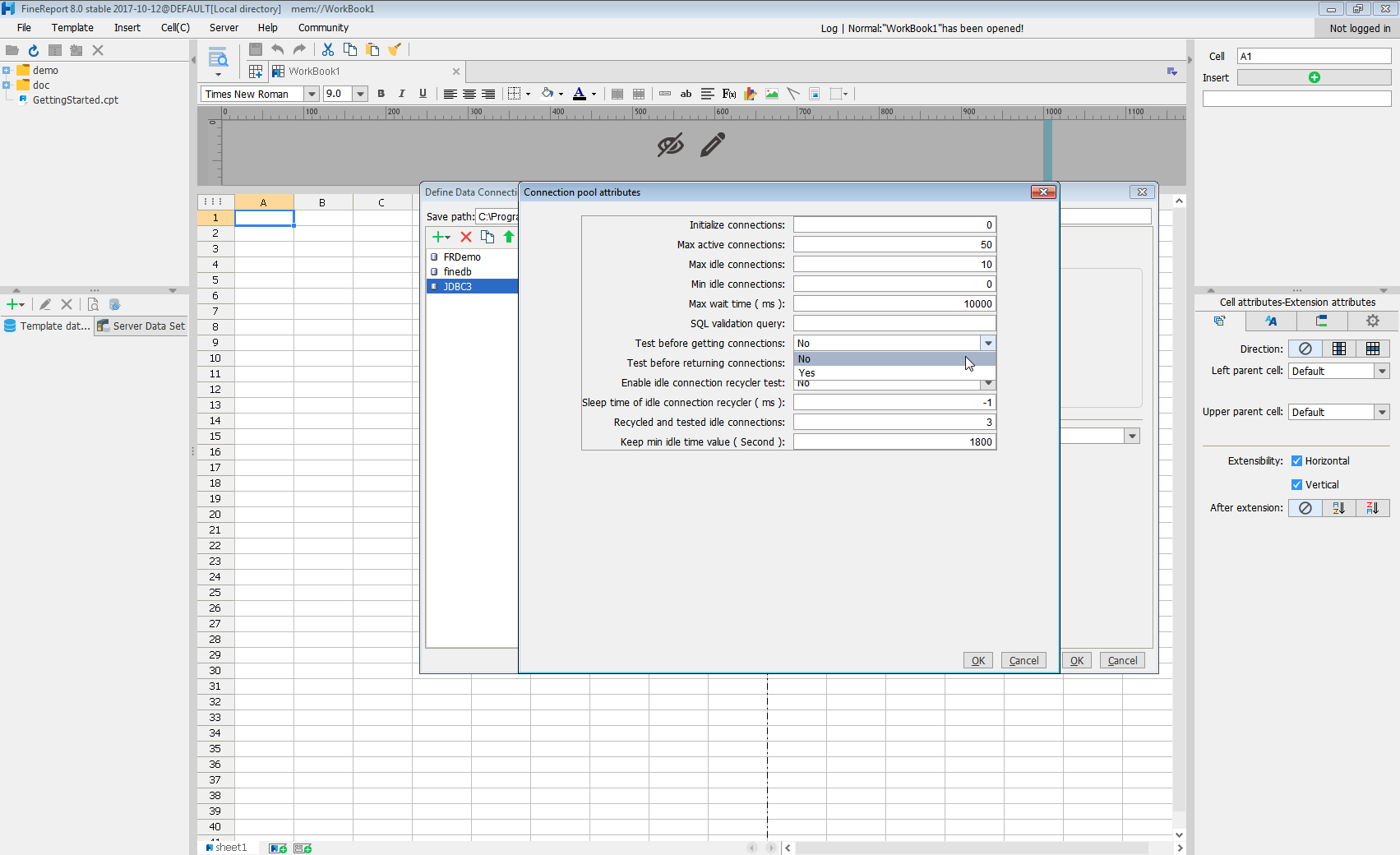
Click Test connection to ensure you have configured the connection properly. With the connection to Certinia set up, you can use it as FineReport data source.
Select Certinia Data in the Report Designer.
- Click to add a new template data set and select DB query to open the database query window.
- Choose the JDBC connection that you created from the dropdown list.
- The Certinia entities will appear as tables on the left pane.
- Write a SELECT statement for the Certinia data tables and columns that you want to load.
- Click preview and data is shown as table.
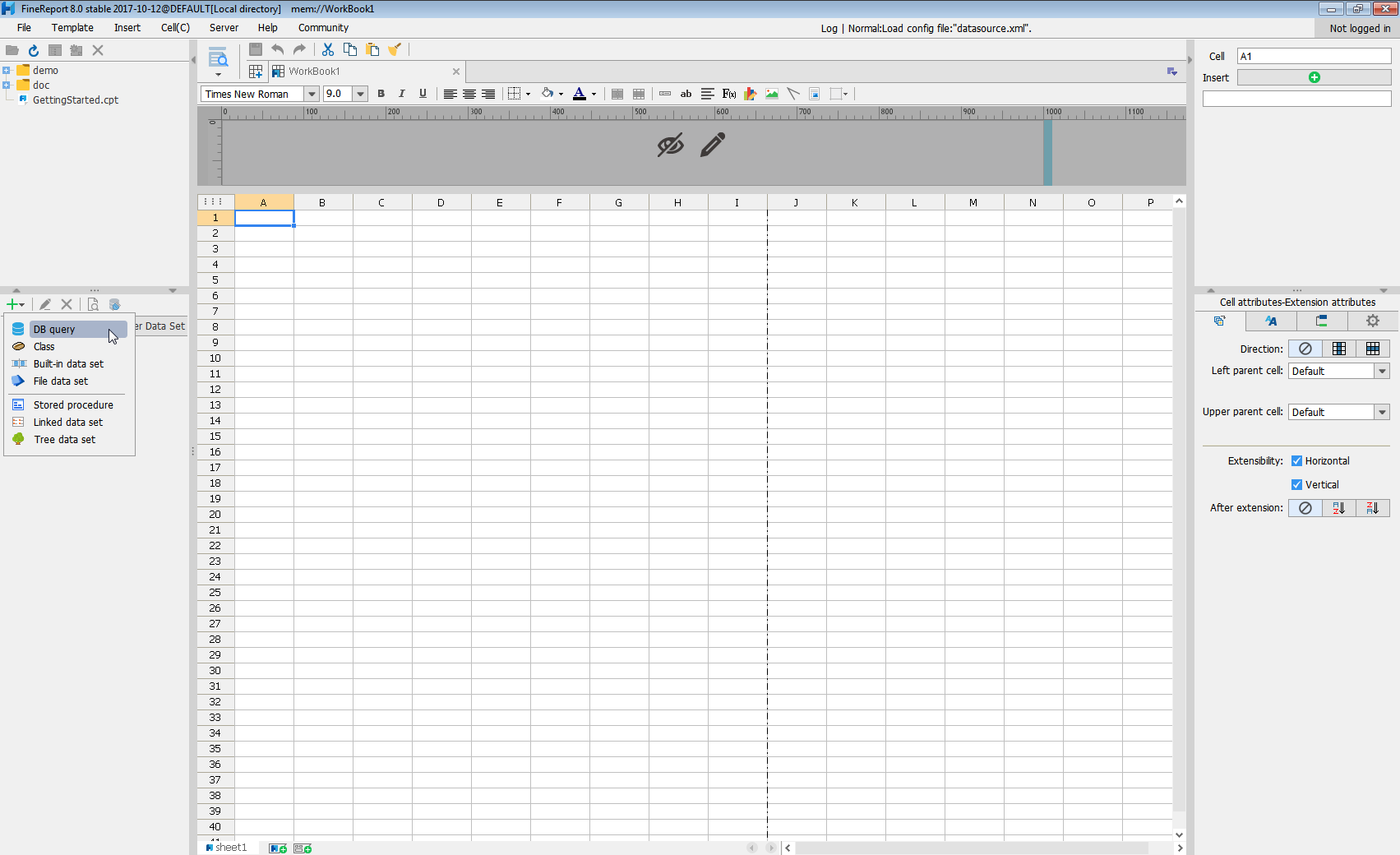
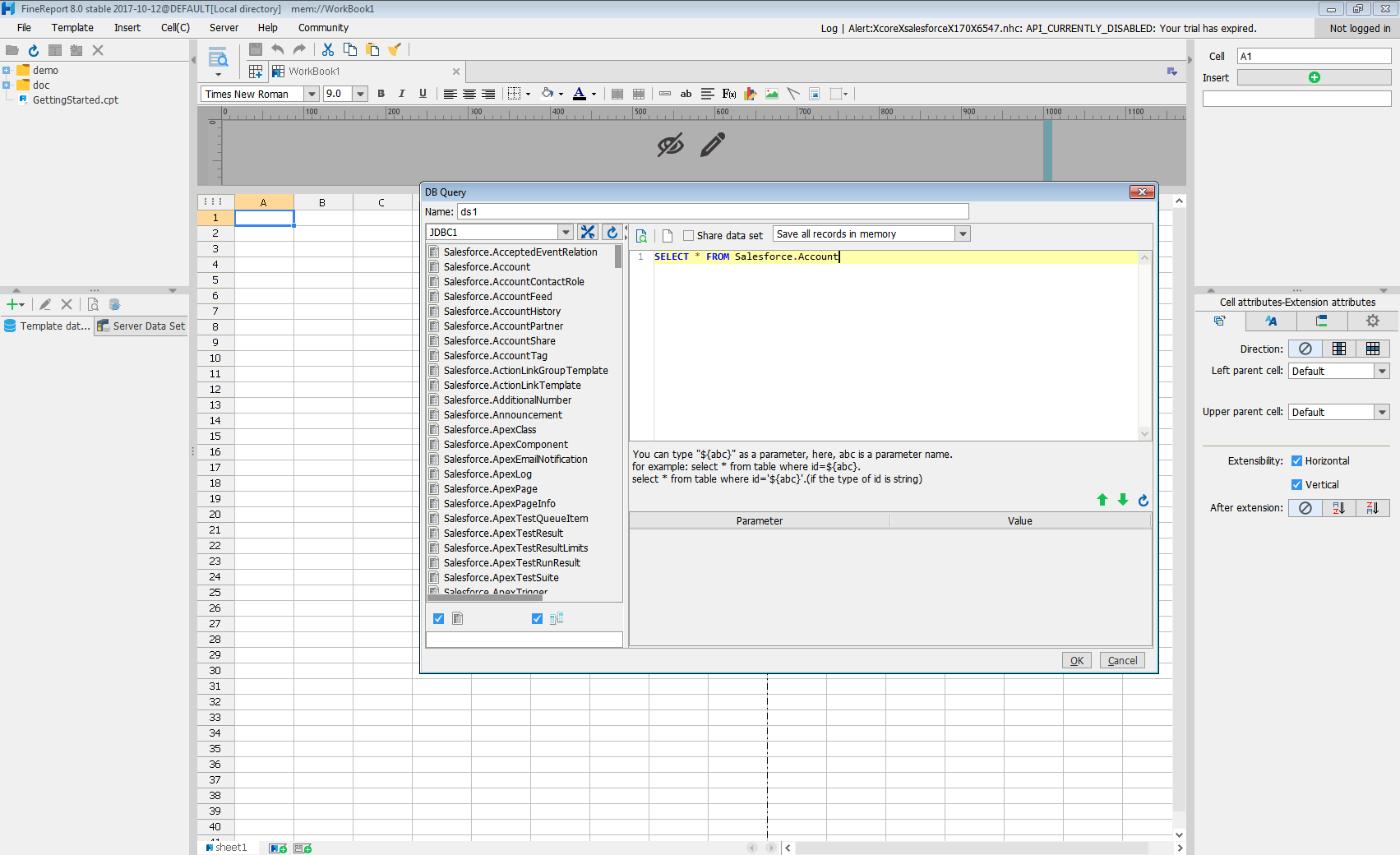
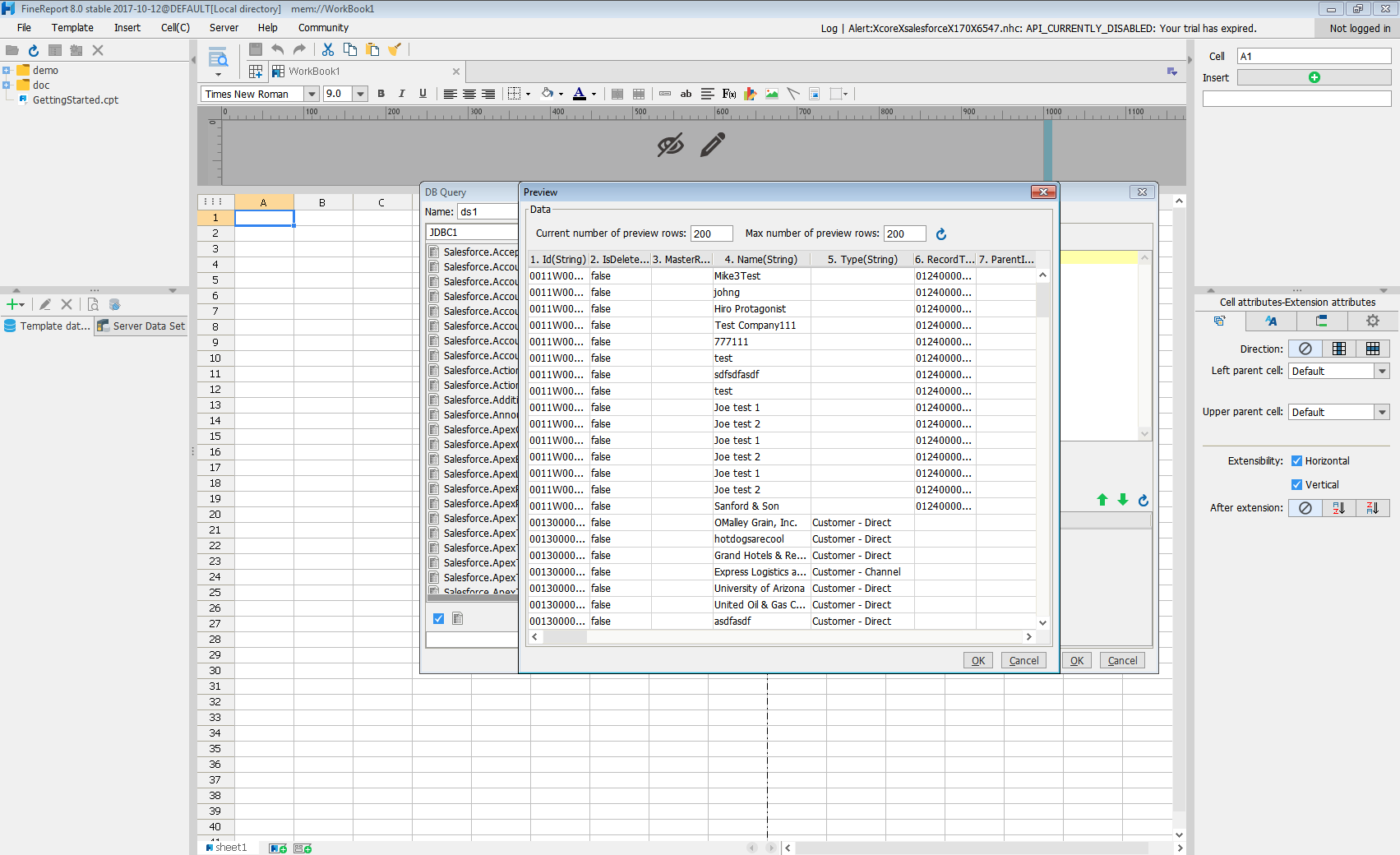
With these simple steps, Certinia can be used as a JDBC data source in FineReport.







